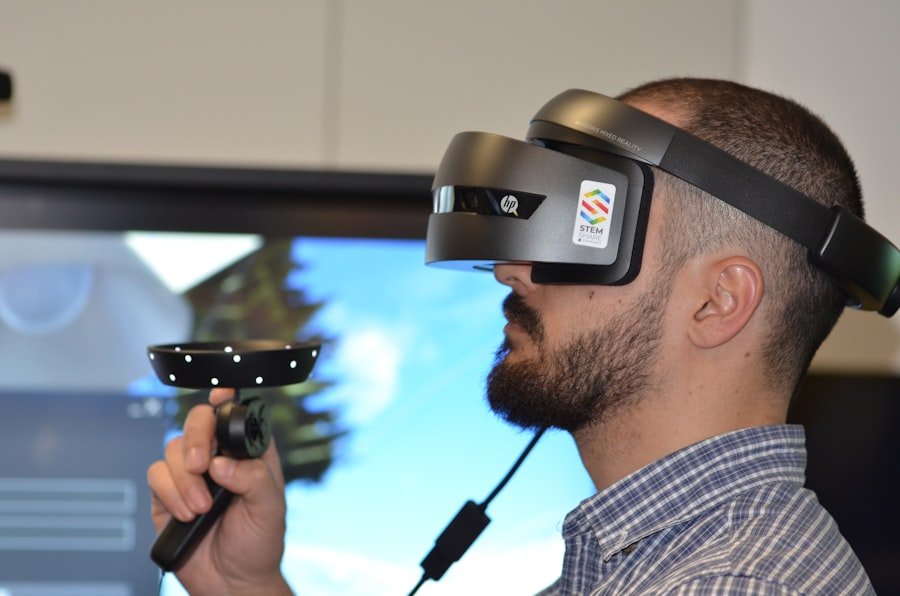As I reflect on the evolution of the workplace, it becomes increasingly clear that we are on the brink of a significant transformation. The traditional office environment, characterised by rigid structures and fixed hours, is giving way to a more dynamic and flexible approach. This revolution is not merely a response to the changing needs of employees but is also driven by advancements in technology that are reshaping how we work, communicate, and collaborate.
The integration of innovative tools and methodologies is fostering a culture that prioritises efficiency, creativity, and employee well-being. In this new landscape, the workplace is no longer confined to four walls. Instead, it has expanded into a realm where digital interactions can occur from virtually anywhere.
This shift has profound implications for how organisations operate and how employees engage with their work. As I delve deeper into this topic, I will explore the various facets of this revolution, examining the impact of cutting-edge technology on work culture, the role of artificial intelligence, and the rise of remote work, among other critical elements.
Summary
- The workplace is undergoing a revolution with the integration of cutting-edge technology and advanced communication tools.
- Artificial Intelligence is reshaping the workforce by automating tasks and improving efficiency.
- Virtual Reality is playing a crucial role in training and development, providing immersive learning experiences for employees.
- Remote work is on the rise, facilitated by advanced communication tools, allowing for greater flexibility and work-life balance.
- Automation and robotics are enhancing productivity in the workplace, streamlining processes and reducing human error.
The Impact of Cutting-Edge Technology on Work Culture
The advent of cutting-edge technology has fundamentally altered the fabric of work culture. I have witnessed firsthand how tools such as cloud computing, collaboration software, and project management applications have transformed the way teams function. These technologies facilitate seamless communication and collaboration, allowing individuals to connect and share ideas regardless of their physical location.
The result is a more inclusive environment where diverse perspectives can flourish, ultimately leading to enhanced creativity and innovation. Moreover, the integration of technology into the workplace has fostered a culture of continuous learning and adaptability. Employees are encouraged to embrace new tools and methodologies, which not only enhances their skill sets but also promotes a growth mindset.
I find that this shift towards a more agile work culture empowers individuals to take ownership of their professional development, leading to increased job satisfaction and engagement. As organisations adapt to these changes, they are also recognising the importance of fostering a supportive environment that encourages experimentation and risk-taking.
How Artificial Intelligence is Changing the Workforce

Artificial intelligence (AI) is undoubtedly one of the most transformative forces in the modern workforce. As I explore its implications, I am struck by how AI is reshaping job roles and responsibilities across various industries. From automating repetitive tasks to providing data-driven insights, AI is enabling employees to focus on higher-level strategic thinking and creativity.
This shift not only enhances productivity but also allows individuals to engage in more meaningful work that aligns with their skills and passions. However, the rise of AI also raises important questions about job displacement and the future of employment. While some roles may become obsolete due to automation, I believe that new opportunities will emerge as organisations adapt to these changes.
The key lies in reskilling and upskilling the workforce to ensure that employees are equipped with the necessary skills to thrive in an AI-driven environment. By embracing lifelong learning and fostering a culture of adaptability, organisations can navigate this transition successfully while empowering their employees to embrace new challenges.
The Role of Virtual Reality in Training and Development
| Metrics | Benefits |
|---|---|
| Improved Retention | Virtual reality training can lead to higher retention rates compared to traditional methods. |
| Engagement | VR training provides an immersive and interactive experience, leading to higher engagement levels. |
| Cost-Effective | VR training can reduce costs associated with traditional training methods, such as travel and materials. |
| Realistic Simulations | VR allows for realistic simulations of scenarios, providing a safe environment for learning. |
| Customisation | VR training can be tailored to individual needs, allowing for personalised learning experiences. |
Virtual reality (VR) is another groundbreaking technology that is revolutionising training and development within the workplace. As I delve into this topic, I am fascinated by how VR creates immersive learning experiences that enhance knowledge retention and skill acquisition. Traditional training methods often fall short in engaging employees, but VR offers a unique opportunity to simulate real-world scenarios in a safe environment.
This hands-on approach allows individuals to practice their skills without the fear of making mistakes in high-stakes situations. Furthermore, VR can be particularly beneficial for industries that require specialised training, such as healthcare or manufacturing. I have seen how VR can be used to replicate complex procedures or machinery operations, providing employees with invaluable experience before they step into real-world situations.
This not only boosts confidence but also ensures that employees are better prepared for their roles. As organisations continue to invest in VR technology for training purposes, I believe we will see a significant shift in how employees learn and develop their skills.
The Rise of Remote Work with Advanced Communication Tools
The rise of remote work has been one of the most notable trends in recent years, accelerated by advancements in communication tools. As I navigate this new landscape, I am continually impressed by how technology has enabled teams to collaborate effectively from different corners of the globe. Video conferencing platforms, instant messaging applications, and project management tools have become essential for maintaining connectivity and productivity in a remote work environment.
This shift towards remote work has not only changed where we work but also how we approach our daily tasks. I have found that remote work fosters greater autonomy and flexibility, allowing individuals to tailor their work environments to suit their preferences. However, it also presents challenges related to communication and team cohesion.
To address these issues, organisations must prioritise building a strong remote culture that emphasises trust, transparency, and regular check-ins.
Enhancing Productivity with Automation and Robotics

Automation and robotics are playing an increasingly vital role in enhancing productivity within the workplace. As I observe this trend, it becomes evident that these technologies are not merely about replacing human labour but rather augmenting it. By automating repetitive tasks, organisations can free up valuable time for employees to focus on more strategic initiatives that require critical thinking and creativity.
I have seen firsthand how automation can streamline processes across various functions, from manufacturing to customer service. For instance, robotic process automation (RPA) can handle data entry tasks with remarkable speed and accuracy, reducing the likelihood of human error. This not only improves efficiency but also allows employees to redirect their efforts towards higher-value activities that contribute to organisational growth.
As we continue to embrace automation and robotics in the workplace, I believe we will witness a significant shift in how work is organised and executed.
Cybersecurity Measures for the Modern Workplace
As our reliance on technology grows, so too does the importance of cybersecurity measures within the modern workplace. I have come to realise that safeguarding sensitive information is paramount for maintaining trust and integrity in any organisation. With cyber threats becoming increasingly sophisticated, it is essential for businesses to adopt robust security protocols that protect both their data and their employees.
In my experience, fostering a culture of cybersecurity awareness is crucial for mitigating risks. Employees must be educated about potential threats and trained on best practices for safeguarding information. This includes recognising phishing attempts, using strong passwords, and understanding the importance of secure networks.
By prioritising cybersecurity measures and promoting a proactive approach among employees, organisations can create a safer digital environment that supports innovation and collaboration without compromising security.
The Future of Work: Predictions and Trends in Technology
As I contemplate the future of work, I am filled with both excitement and curiosity about what lies ahead. The rapid pace of technological advancement suggests that we will continue to see significant changes in how we work over the coming years. One prediction I hold is that hybrid work models will become increasingly prevalent as organisations seek to balance flexibility with collaboration.
This approach allows employees to enjoy the benefits of remote work while still fostering meaningful connections with their colleagues. Additionally, I foresee an increased emphasis on employee well-being as organisations recognise its impact on productivity and engagement.
From wellness apps to virtual support groups, these tools will empower employees to prioritise their well-being while navigating the demands of modern work. In conclusion, as I reflect on the revolutionising workplace landscape shaped by cutting-edge technology, it becomes clear that we are entering an era defined by flexibility, innovation, and collaboration. By embracing these changes and adapting to new ways of working, organisations can create environments that empower employees to thrive in an ever-evolving world.
The future holds immense potential for those willing to embrace change and harness the power of technology for positive transformation.
One key aspect of maximising team empowerment in an organisation is through the efficient use of technology. According to a recent article on CFO Insights, embracing digital tools and platforms can streamline processes, improve communication, and ultimately empower team members to work more effectively. By leveraging technology, finance teams can enhance their efficiency and productivity, leading to better outcomes for the organisation as a whole.
FAQs
What is technology?
Technology refers to the application of scientific knowledge for practical purposes, especially in industry. It includes tools, systems, and methods used to solve problems and achieve goals.
What are the different types of technology?
There are various types of technology, including information technology (IT), biotechnology, nanotechnology, medical technology, and communication technology. Each type serves different purposes and has its own set of applications.
How does technology impact society?
Technology has a significant impact on society, influencing how people communicate, work, and live. It has transformed various industries, improved efficiency, and created new opportunities for innovation and growth.
What are the benefits of technology?
Technology has numerous benefits, including improved communication, increased productivity, enhanced efficiency, and the ability to access and share information more easily. It also enables advancements in healthcare, education, and other critical areas.
What are the challenges of technology?
Despite its benefits, technology also presents challenges, such as cybersecurity threats, job displacement due to automation, and ethical concerns related to privacy and data usage. It is important to address these challenges to ensure responsible and sustainable use of technology.
How is technology evolving?
Technology is constantly evolving, with new innovations and advancements emerging regularly. This includes developments in artificial intelligence, robotics, renewable energy, and other cutting-edge fields. Keeping up with these changes is essential for staying competitive and relevant in today’s world.



